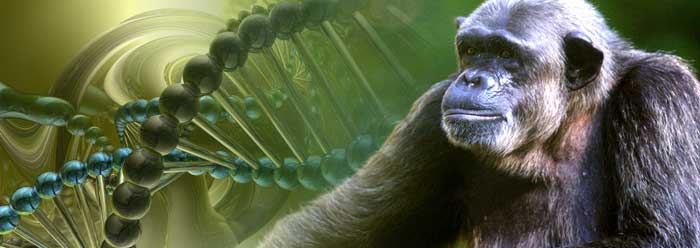The ICR life sciences team has completed the second phase of its project comparing human and chimp DNA sequence. As we reported in a previous research column, 40,000 purportedly random chimpanzee DNA sequences were obtained from the National Center for Biotechnology (NCBI).1, 2 The chimp sequences (740 nucleotides each on average) were compared to four different versions of the human genome using the commonly employed genetic algorithm called BLASTN.3
As indicated in the first part of the study, 15 different experiments testing a comprehensive set of algorithm parameters were performed. These involved 600,000 attempted alignments between the chimp sequences and the human genome. In this set of experiments, no low-complexity sequence masking was performed. All of the available DNA sequence was tested and none of it was excluded.
The masking of low-complexity DNA sequence is a feature that is typically utilized by evolutionists when they compare DNA. Masking supposedly removes the non-coding portions of the genome that are not conducive to evolutionary results. However, science has proven that the entire human genome is functional and virtually every region is critical to cell life.4, 5 Additionally, evolutionists are now reversing themselves and claiming that the non-coding DNA is where important features related to human evolution are located and, thus, are important areas to study as well.6
Nevertheless, in the second phase of our human-chimp experiments, the 600,000 alignments of the first phase were completely repeated while using low-complexity sequence masking. As a result, a sum total of 1.2 million attempted alignments between the chimp and human genomes was performed, generating one of the most comprehensive genome-wide DNA sequence similarity studies ever conducted between chimp and human. The results and conclusions in their entirety are currently being published in the Answers Research Journal and should be available online at answersingenesis.org/arj in the near future.
The usage of sequence masking in the second phase did very little to change the overall numbers achieved in the first phase of the study. The use of masking had the effect of decreasing computational time about five- to six-fold, lengthening the alignments slightly, lowering the number of database hits in some cases, and lowering the percent nucleotide identity slightly. Depending on the algorithm parameter combinations, average sequence identity between human and chimp for both phases of the study varied between 86 and 89 percent.
Interestingly, the chimp sequences that were utilized were subsequently implicated by personal correspondence with NCBI staff and supporting data from this study to be pre-screened for similarity to the human genome. Thus, they were not truly random chimp genome sequences, but known to be homologous to human DNA at some level.
Nevertheless, excluding data for the number of chimp sequences that did not align under stringent algorithm conditions or the large amount of bases within each chimp sequence that did not align (under all algorithm conditions), a very conservative estimate of human-chimp DNA similarity genome-wide is 86 to 89 percent. Results from this comprehensive study unequivocally indicate that the human and chimpanzee genomes are at least 10 to 12 percent less identical than is commonly claimed. These results are more clearly in line with the large anatomical and behavioral differences observed between human and chimp.
References
- Tomkins, J. 2011. First Phase Complete in Human and Chimp Genome-Wide DNA Comparison. Acts & Facts. 40 (12):6.
- More information is available at blast.ncbi.nlm.nih.gov.
- Altschul , S. F. et al. 1990. Basic local alignment search tool. Journal of Molecular Biology. 215 (3): 403-410.
- Tomkins, J. 2011. The Junk DNA Myth Takes a Well-Deserved Hit. Journal of Creation. 25 (3): 23-27.
- Wells, J. 2011. The Myth of Junk DNA. Seattle, WA: Discovery Institute Press.
- Polavarapu, N. et al. 2011. Characterization and potential functional significance of human-chimpanzee large INDEL variation. Mobile DNA. 2 (1): 13.
* Dr. Tomkins is Research Associate at the Institute for Creation Research and received his Ph.D. in Genetics from Clemson University.
Cite this article: Tomkins, J. 2012. Human-Chimp DNA Comparison Research Yields Lower Genetic Similarity. Acts & Facts. 41 (1): 8.






















